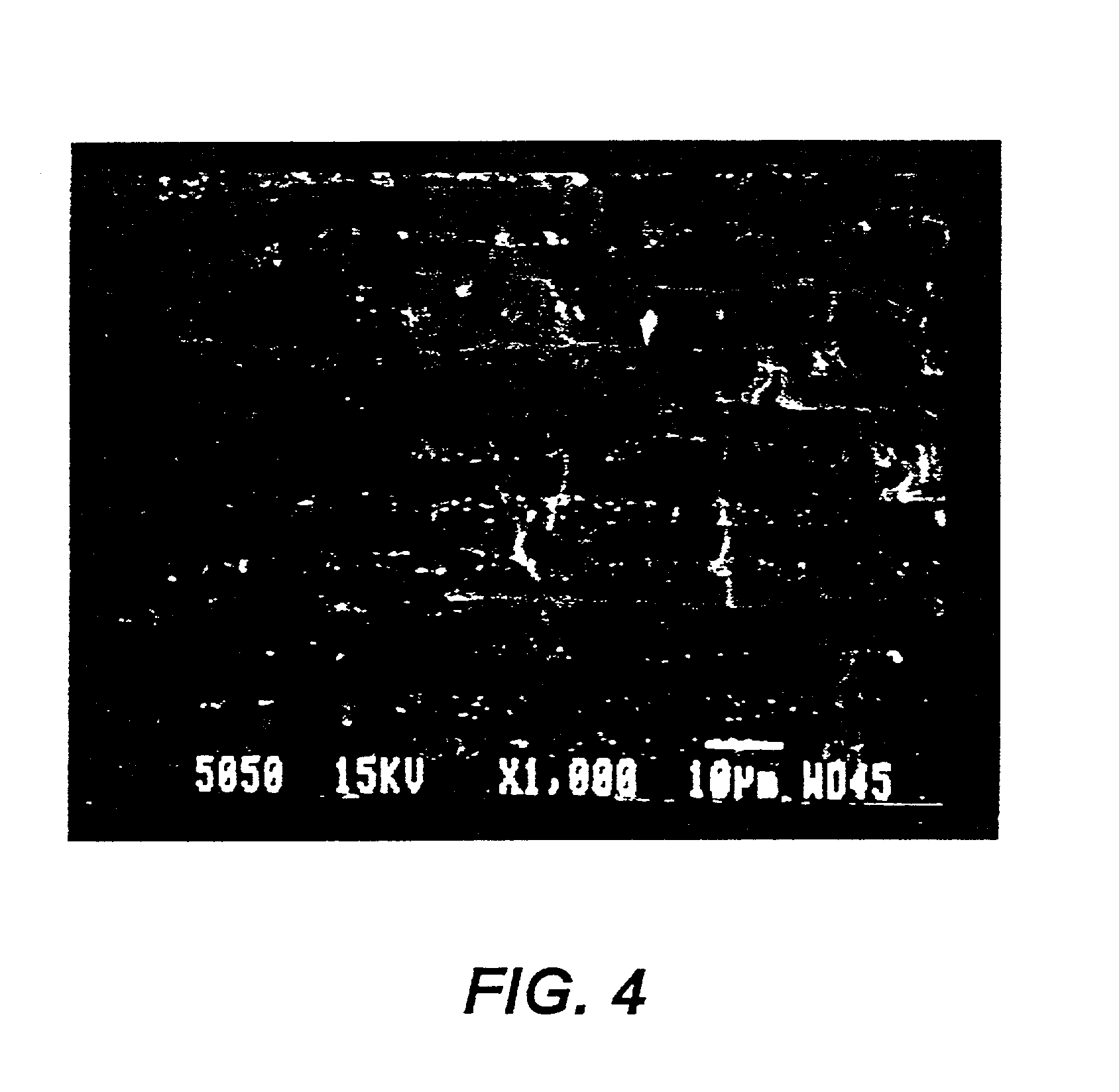Water degradable microlayer polymer film and articles including same
a polymer film, water-degradable technology, applied in the field of polymer films, can solve the problems of clogging the commode and lack of other necessary characteristics, and achieve the effect of reducing the commode, and reducing the commode clogging
- Summary
- Abstract
- Description
- Claims
- Application Information
AI Technical Summary
Benefits of technology
Problems solved by technology
Method used
Image
Examples
example 1
[0061] A CaCO.sub.3 particulate filler material (SUPERMITE from ECC International) was modified with 6 wt. % (based on the weight of the filler material) of DOW CORNING 193 silicone glycol surfactant (Dow Corning Corporation). The resultant treated and modified filler material was intermixed with a LLDPE resin composed of an ethylene-octene-1 copolymer (Dowlex NG 3347A supplied by Dow Plastics by using a Farrel high shear mixer (Heritage Plastics Inc.), and the filled resin was pelletized. The CaCO.sub.3 mean particle size was about 1 micron, and the concentration of CaCO.sub.3 was 43.4 wt. % (based on the total weight of the resin, filler, and surfactant) as measured by the ashes analysis. The DOW CORNING 193 silicone glycol surfactant had a HLB number of 12.2. The surfactant modified filled LLDPE resin was dried for 14 hours using vacuum oven set at 80.degree. C. before microlayer coextrusion. POLYOX.RTM. WSR N-3000 (PEO) resin in powder form (Union Carbide Corporation) was blende...
example 2
[0062] A CaCO.sub.3 particulate filler material (SUPERMITE from ECC International) was modified with 6 wt. % (based on the weight of the filler material) of DOW CORNING 193 silicone glycol surfactant (Dow Coming Corporation). The resultant treated and modified filler material was intermixed with a LLDPE resin composed of an ethylene-octene-1 copolymer (Dowlex NG 3347A supplied by Dow Plastics) by using a Farrel high shear mixer (Heritage Plastics Inc.), and the filled resin was pelletized. The CaCO.sub.3 mean particle size was about 1 micron, and the concentration of CaCO.sub.3 was 43.4% (based on the total weight of the resin, filler, and surfactant) as measured by the ashes analysis. The DOW CORNING 193 silicone glycol surfactant had a HLB number of 12.2. The surfactant-modified filled LLDPE resin was dried for 14 hours using vacuum oven set at 80.degree. C. before microlayer coextrusion. POLYOX.RTM. WSR N-3000 (PEO) resin in powder form (Union Carbide Corporation) was blended wit...
example 3
[0063] A CaCO.sub.3 particulate filler material (SUPERMITE from ECC International) was modified with 6 wt. % (based on the weight of the filler material) of DOW CORNING 193 silicone glycol surfactant (Dow Corning Corporation). The resultant treated and modified filler material was intermixed with a LLDPE resin composed of an ethylene-octene-1 copolymer (Dowlex NG 3347A supplied by Dow Plastics) by using a Farrel high shear mixer (Heritage Plastics Inc.), and the filled resin was pelletized. The CaCO.sub.3 mean particle size was about 1 micron, and the concentration of CaCO.sub.3 was 43.4% (based on the total weight of the resin, filler, and surfactant) as measured by the ashes analysis. The DOW CORNING 193 silicone glycol surfactant had a HLB number of 12.2. The surfactant-modified filled LLDPE resin was dried for 14 hours using vacuum oven set at 80.degree. C. before microlayer coextrusion. POLYOX.RTM. WSR N-3000 (PEO) resin in powder form (Union Carbide Corporation) was blended wi...
PUM
| Property | Measurement | Unit |
|---|---|---|
| dry tensile strength | aaaaa | aaaaa |
| particle size | aaaaa | aaaaa |
| particle size | aaaaa | aaaaa |
Abstract
Description
Claims
Application Information
 Login to View More
Login to View More - R&D
- Intellectual Property
- Life Sciences
- Materials
- Tech Scout
- Unparalleled Data Quality
- Higher Quality Content
- 60% Fewer Hallucinations
Browse by: Latest US Patents, China's latest patents, Technical Efficacy Thesaurus, Application Domain, Technology Topic, Popular Technical Reports.
© 2025 PatSnap. All rights reserved.Legal|Privacy policy|Modern Slavery Act Transparency Statement|Sitemap|About US| Contact US: help@patsnap.com



